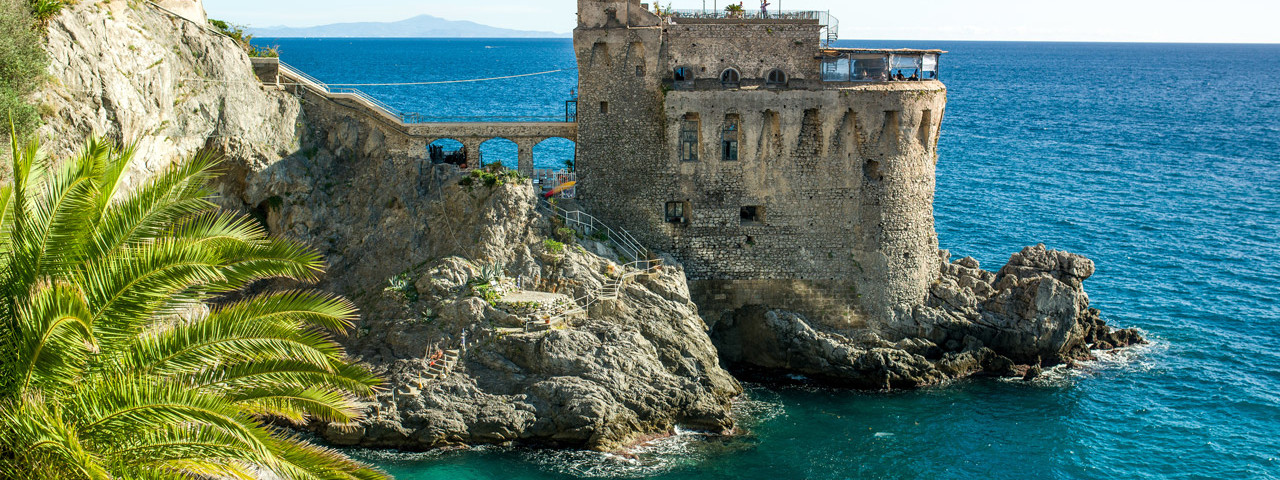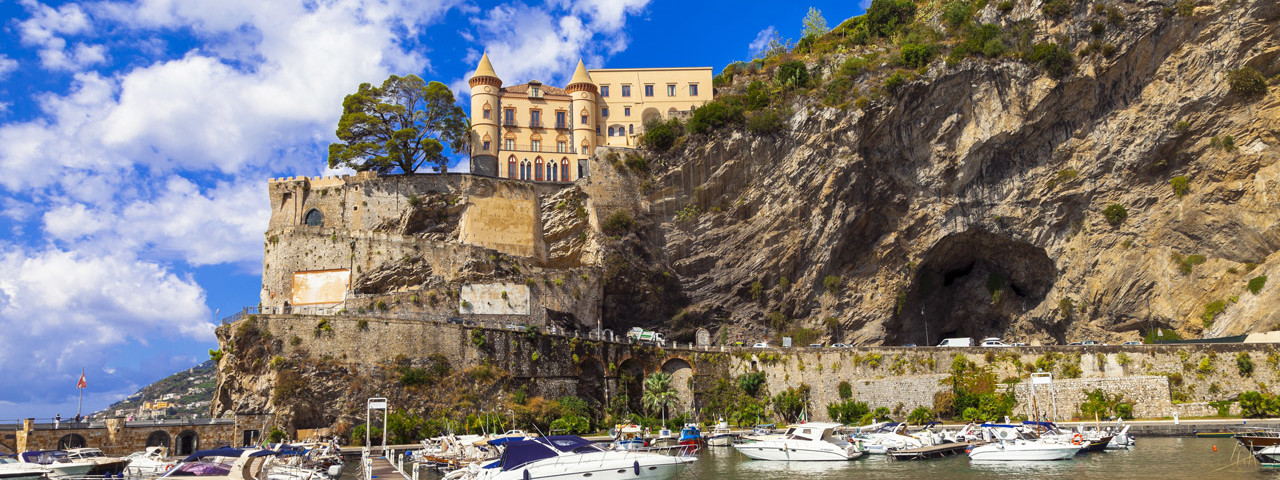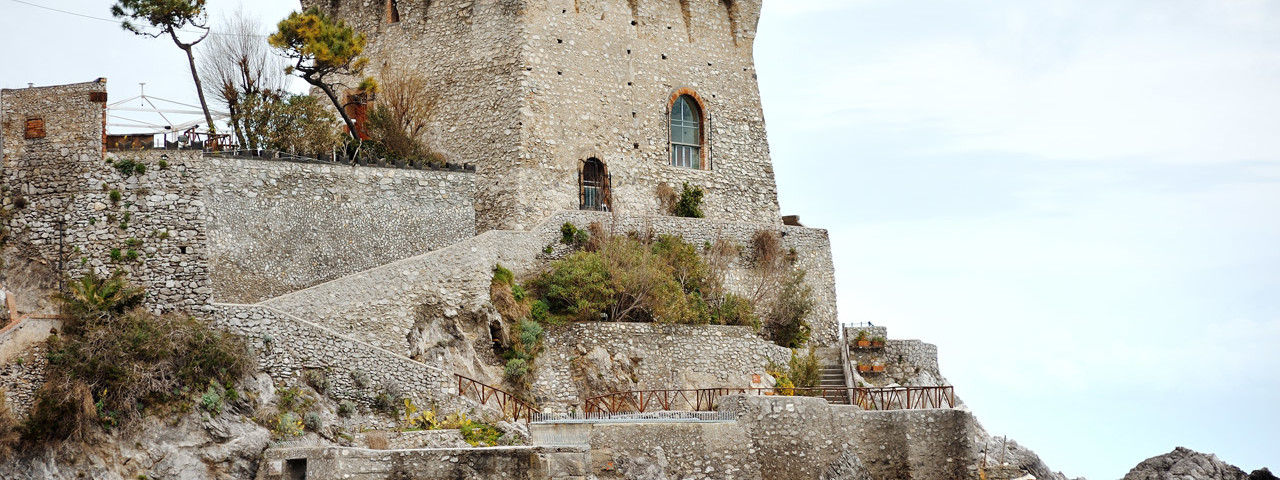Maiori
Maiori, the city of cinema
The beautiful town of Maiori is located in the heart of the Amalfi Coast, just 5 km from Amalfi.
It was founded in Roman times. The first inhabitants who settled here (precise date unknown), were probably of Etruscan origins. They gave the city its original name of Reghinna Major (to distinguish it from the nearby Reghinna Minor, the current Minori), used to locate this place until the 10th century.
Like the other towns of the Amalfi Coast, in 842, Maiori became part of the Confederation of the Amalfi States which was headed by the Maritime Republic of Amalfi, becoming home of the Arsenals, the Admiralty, the Customs and the Salt warehouse and standing out for fishing, agriculture and the paper industry.
Unlike the vast majority of the other towns of the Amalfi Coast, Maiori has a long beach of almost 1 km, the longest of the entire Amalfi Coast. Here there is the "oldest" bathing establishment of the entire Divina Costa, opened in 1945 and in a short time this became the beach of famous guests: Ingrid Bergman, Jaqueline Kennedy, Fausto Coppi, the prince De Curtis, aka Totò, Nino Taranto and Anna Magnani, at the time of his love story with the director Roberto Rossellini. He was madly in love with the place and chose Maiori to set his masterpiece "Paisà" in 1946. This is considered the most representative cinematographic work of Italian Neorealism. He returned to Maiori several times for other important films of his filmography, result of his pilgrimages to the Amalfi Coast.
Come and discover Maiori in the most simple way, avoiding long queues in the car and problems with parking and timing.
What to see and what to do in Maiori?
\1
The Castle of San Nicola de Thoro Plano, the Miramare Castle and the Mezzacapo Palace
The Castle of San Nicola de Thoro Plano, ancient bulwark of the IX century, witness of the Amalfi defensive system; the Miramare Castle, located on a rocky outcrop on the border between Maiori and Minori, surmounted by towers with a conical spire; Palazzo Mezzacapo with the eighteenth-century adjoining gardens, designed like a Maltese Cross, built in the first half of the nineteenth century, belonging to the Mezzacapo marquises, is currently the headquarters of the municipal library, historical archive, cultural laboratory and some council offices.
\2
The Collegiata of Santa Maria a Mare, Sanctuary of the Avvocata and the churches
The Collegiata of Santa Maria a Mare with its characteristic majolica dome and the suggestive Sanctuary of the Avvocata, dominates the entire Amalfi Coast from the top of Monte Falesio, is only reachable after a long walk and was built following the appearance of the Virgin Mary to a local shepherd boy.
Together with the other numerous churches, both are witnesses of the profound religiosity of the city. The Church of Santa Maria del Carmine, next to the Collegiata of Santa Maria a Mare, the Church of San Giacomo, the Church of San Sebastiano and the Church of San Francesco with the adjoining convent, are also worth a visit.
\3
The Abbey of Santa Maria dell'Olearia
The Complex of Santa Maria dell’Olearia, founded in 973 by the first Benedictine monks on the Amalfi Coast who used an ancient cave settlement to build their monastery, is overlooking the sea and the coast with a breath-taking view. It is made up of three small churches superimposed; containing numerous frescoes dedicated to the Virgin Mary and San Nicola and is one precious testimony of art and architecture of the early Middle Ages.
\4
Trail of the lemons
For trekking lovers, a walk to the "Trail of the lemons" is not to be missed: a beautiful path that takes an hour from Maiori to Minori. An easy hiking walk that winds through ancient roads and stairways from which you can enjoy a breath-taking panorama, immersed in the unmistakable scent of the numerous lemon groves of this splendid coast.
\5
Capo d'Orso, the caves and the beaches
The promontory of Capo d'Orso whose name is due to its resemblance to the head of a bear; the Pandora caves and the sulphurous cave; amongst the many beautiful beaches, some reachable only via sea, Cala Bellavaia stands out. This is better known as the beach of the “dead horse”, since a horse accidentally fell from the mule track it was following.








